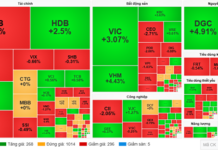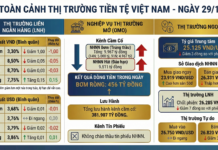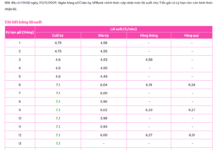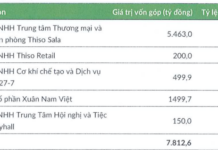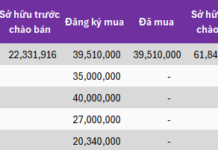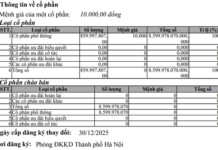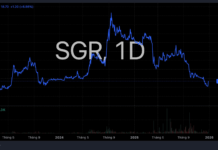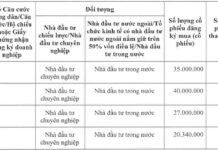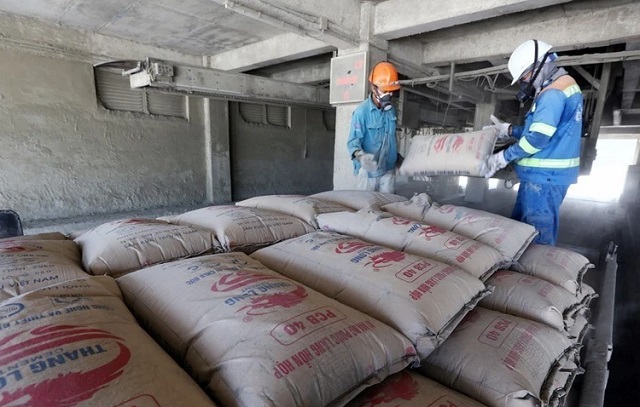
Cement production line at Thang Long Cement JSC. (Photo: Danh Lam/VNA)
|
A 4.8% hike in electricity rates since October 11, coupled with significant fluctuations in input costs for raw materials such as coal and oil, which are expected to continue rising, have forced cement manufacturers to adjust their selling prices.
More than ten days after the Vietnam Electricity (EVN) announced the rate increase, numerous cement companies have adjusted their price lists, with a common increase of VND 50,000 per ton of product. This move aims to offset production costs amid rising electricity, coal, and packaging expenses.
Specifically, units like Vicem Bim Son, Vicem But Son, Thang Thang Group Cement, and Xuan Thanh Cement have unanimously set a price hike of VND 50,000 per ton for this adjustment. Meanwhile, The Vissai increased by VND 46,300 per ton…
According to Mr. Nguyen Quang Cung, Chairman of Vietnam Cement Association (VNCA), raising prices is the last thing cement businesses want to do, but it has become necessary for their survival.
VNCA’s calculations show that electricity accounts for approximately 15-20% of cement production costs, depending on the plant. Therefore, an increase in electricity tariffs inevitably leads to a corresponding increase in cement prices to maintain stable production and business operations.
The decision to raise cement prices is inevitable, as the product has been sold below production costs for several years. Without adjusting the selling price to compensate for rising input costs, businesses cannot sustain their operations.
VNCA predicts that challenges will persist for the cement industry throughout 2024. In the first three quarters, domestic cement consumption barely reached the 2023 level and has remained low.
Exports have also declined, with only 22.5 million tons, valued at 863 million USD, achieved in the same period, representing a 4.3% decrease in volume and a 15.1% drop in value compared to the previous year.
The continuous decline in cement consumption since 2022 has put manufacturers in a difficult position. As of 2024, there are 61 cement plants in the country, with a total capacity of about 117 million tons of cement per year. However, consumption in 2023 reached only about 87.8 million tons, including 56.6 million tons for the domestic market and 31.2 million tons for exports.
Domestic cement consumption in 2023 was just 84% of the previous year’s level, while export volume remained at 99%…
These figures indicate that the cement industry faces prolonged challenges. The price increase is only a temporary solution and does not address the underlying difficulties faced by the businesses.
Cement is not the only industry affected by the electricity price hike, as many construction material manufacturers have also raised their product prices. This has created a ripple effect of difficulties for construction contractors.
Mr. Nguyen Quoc Hiep, Chairman of the Vietnam Contractors Association, commented that the simultaneous increase in electricity rates and construction material prices has made it even more challenging for contractors.
The rising construction material prices are putting extra pressure on contractors, especially those working on fixed-price or lump-sum contracts.
In the context of a fragile industry still recovering from the impacts of the COVID-19 pandemic and a sluggish real estate and construction market, the increase in electricity and construction material prices will significantly affect construction companies. While the electricity rate adjustment may seem modest, it triggers a chain reaction of increases in various building material prices, creating additional challenges for contractors.
To alleviate the difficulties faced by cement manufacturers, the Vietnam Cement Association has proposed to the Prime Minister and relevant ministries to promote domestic cement consumption by utilizing elevated roads in expressway investments, especially in areas with soft soil or requiring flood mitigation, such as the Central region and the Mekong Delta…
At the same time, they suggested amending Decree 26/2023/ND-CP to apply a 0% export tax rate on cement clinker. According to VNCA, with a sluggish domestic market and consumption hovering around 60 million tons per year, the actual production capacity could reach up to 130 million tons. If exports are not possible, the risk of business bankruptcy increases.
Additionally, the higher export tax and the inability to deduct value-added tax from cement clinker exports have hindered companies’ ability to sell their products overseas, leading to production halts. In 2023, many plants had to cease operations for 6 to 12 months.
From the perspective of construction contractors, Mr. Hiep believes that to mitigate market fluctuations, contractors themselves need to embrace innovation and adopt new equipment and modern technology to reduce costs and improve efficiency.
Contractors should also enhance their forecasting capabilities, risk management, and resource management to improve operational effectiveness and adapt to market changes.
Furthermore, the Departments of Construction should promptly and accurately update construction material prices for application in public works projects funded by the state budget.
Additionally, it is crucial to implement supportive measures for businesses, such as improving the business environment and removing legal obstacles related to project procedures…
Thu Hang


